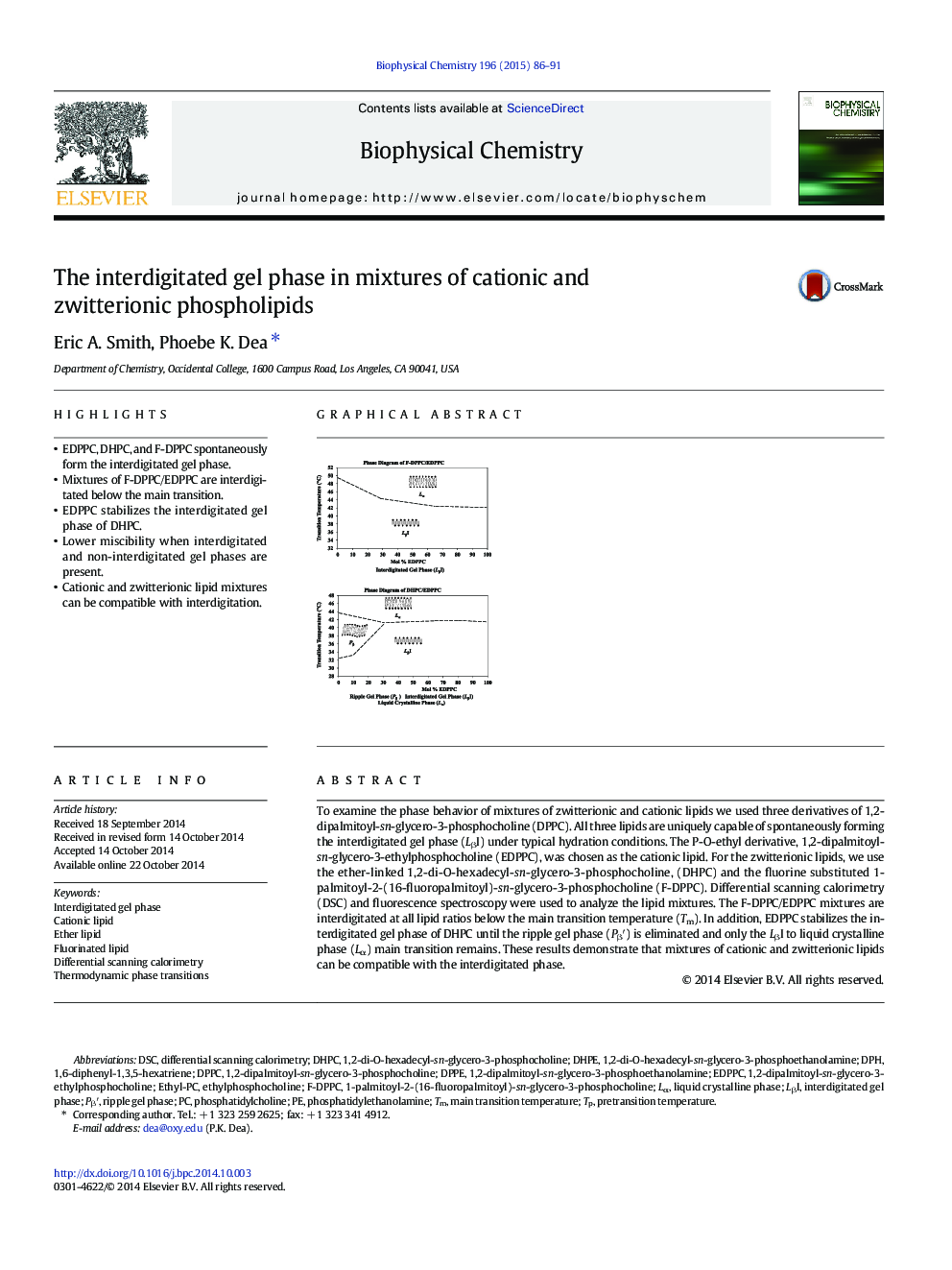| Article ID | Journal | Published Year | Pages | File Type |
|---|---|---|---|---|
| 5370898 | Biophysical Chemistry | 2015 | 6 Pages |
â¢EDPPC, DHPC, and F-DPPC spontaneously form the interdigitated gel phase.â¢Mixtures of F-DPPC/EDPPC are interdigitated below the main transition.â¢EDPPC stabilizes the interdigitated gel phase of DHPC.â¢Lower miscibility when interdigitated and non-interdigitated gel phases are present.â¢Cationic and zwitterionic lipid mixtures can be compatible with interdigitation.
To examine the phase behavior of mixtures of zwitterionic and cationic lipids we used three derivatives of 1,2-dipalmitoyl-sn-glycero-3-phosphocholine (DPPC). All three lipids are uniquely capable of spontaneously forming the interdigitated gel phase (LβI) under typical hydration conditions. The P-O-ethyl derivative, 1,2-dipalmitoyl-sn-glycero-3-ethylphosphocholine (EDPPC), was chosen as the cationic lipid. For the zwitterionic lipids, we use the ether-linked 1,2-di-O-hexadecyl-sn-glycero-3-phosphocholine, (DHPC) and the fluorine substituted 1-palmitoyl-2-(16-fluoropalmitoyl)-sn-glycero-3-phosphocholine (F-DPPC). Differential scanning calorimetry (DSC) and fluorescence spectroscopy were used to analyze the lipid mixtures. The F-DPPC/EDPPC mixtures are interdigitated at all lipid ratios below the main transition temperature (Tm). In addition, EDPPC stabilizes the interdigitated gel phase of DHPC until the ripple gel phase (Pβâ²) is eliminated and only the LβI to liquid crystalline phase (Lα) main transition remains. These results demonstrate that mixtures of cationic and zwitterionic lipids can be compatible with the interdigitated phase.
Graphical abstractDownload full-size image
